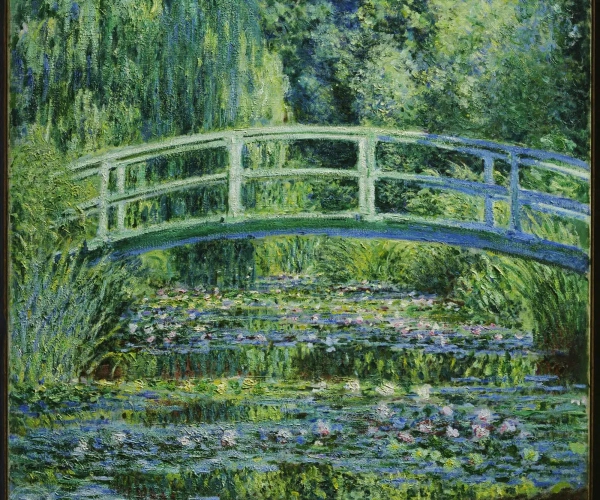Water Lily Pond
Claude Monet's "Water Lily Pond" is a mesmerizing masterpiece that stands as a testament to his genius in the Impressionist movement. This artwork, part of his celebrated "Nymphéas" series, captures the essence of his garden in Giverny, a subject that deeply fascinated Monet in his later years.
Painted in 1899, "Water Lily Pond" is a symphony of color and light. Monet's fascination with the effects of light on the natural landscape is vividly expressed through his innovative use of color and brushwork. The painting showcases the pond, overarched by a wooden bridge, with water lilies floating serenely on the surface. This tranquil setting is transformed into a dynamic tapestry of reflections, light, and color.
One of the most striking aspects of this work is Monet's radical approach to perspective. He abandons traditional techniques, choosing instead to immerse the viewer directly into the scene. The bridge, rather than serving as a mere structure, becomes a vital component of the composition, leading the eye into the lush foliage and the water's surface.
Monet's brushstrokes are loose and expressive, a hallmark of his mature style. The dappled light and shade, the reflections of the sky and trees on the water, and the delicate water lilies are rendered with a blend of precision and spontaneity. This interplay creates a sense of depth and movement, making the pond seem alive and ever-changing.
"Water Lily Pond" is not just a depiction of a garden scene; it is an exploration of the nuances of nature and the ephemeral quality of light. Monet's ability to capture the mood and atmosphere of a moment, rather than just its visual representation, was revolutionary. This painting, with its vibrant palette and emotive power, paved the way for future art movements, notably Abstract Impressionism.
In essence, "Water Lily Pond" is a reflection of Monet's deep connection with nature and his continuous quest to capture its transient beauty. This masterpiece goes beyond aesthetic appeal, embodying the essence of Impressionism and marking Monet's enduring legacy in the art world.







No Comments Yet...